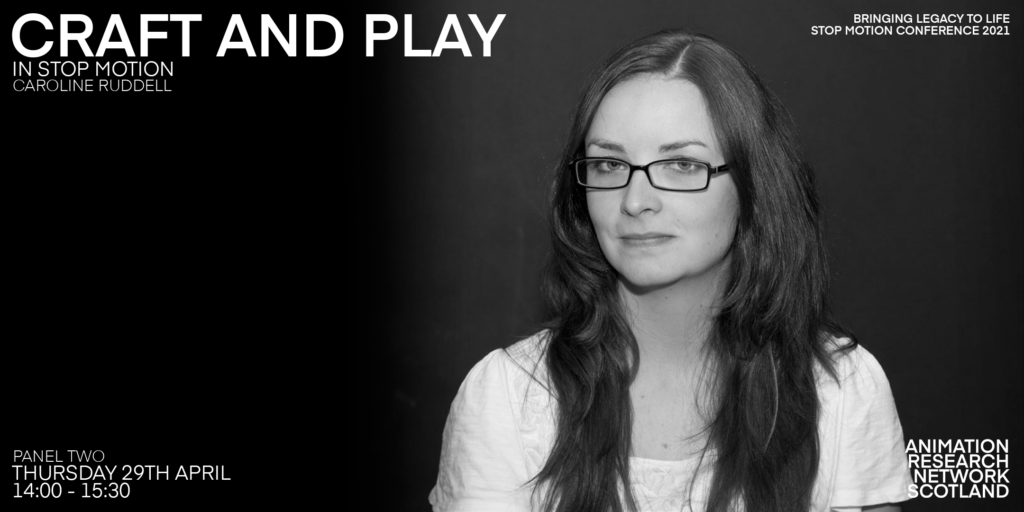Caroline Ruddell
Dr Caroline Ruddell is Senior Lecturer in Film, and Divisional Lead for Production and Performance at Brunel University London. She specialises in animation and representation onscreen and has published widely in these areas. Caroline is currently researching craft-based, handmade animation and has recently published The Crafty Animator: Handmade, Craft-based Animation and Cultural Value (eds. Ruddell & Ward, 2019) and The Animation Studies Reader (eds. Dobson, Honess Roe, Ratelle & Ruddell, 2018). She is Associate Editor for the Sage publication animation: an interdisciplinary journal, and Book Series Co-Editor (with Prof Paul Ward) for Palgrave Animation.
Abstract
This paper seeks to further interrogate the relationship between stop motion, notions of craft, and play. Despite its being extremely wide-ranging and multi-faceted, some animation is often aligned with children’s culture. I seek to move beyond this argument to consider stop motion in relation to notions of craft and play, which perhaps cannot be categorised as appealing to one demographic.
Rachel Moseley provides some useful frameworks in her work on stop-motion animation of the 1960s and 1970s, where she looks at production companies such as Smallfilms. Moseley argues that much of the literature in Animation Studies has largely ignored stop-motion unless it fulfils these criteria: ‘an address to an adult audience; the perception that it is “international”, avant-garde or, at least, art; its distribution as film’. She makes the point that while children’s animated television has been neglected, to some degree, stop-motion of the nature she interrogates is doubly ignored by both Television Studies and Animation Studies. For Moseley, then, animation that is made for children has not been considered to be critically ‘important’ enough to gain scholarly attention. Arguing that stop-motion animation for children is associated with ‘lightness’, the ‘playful’ and perhaps the even more loaded term of ‘whimsy’,ii Moseley suggests that such connotations are ‘indicative of the lack of attention paid to children’s television in general histories of television and perhaps also of the perception of this particular form of pre-school television as simple and self-apparent in its meaning and address’.iii This paper will seek to uncover some of the tensions stop motion poses in terms of craft, play and the cultural value attached to various animations.


